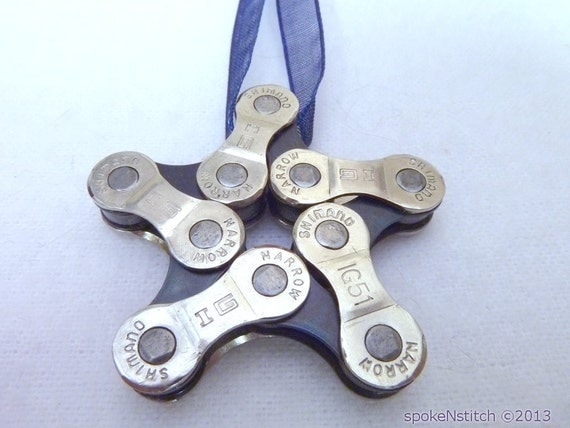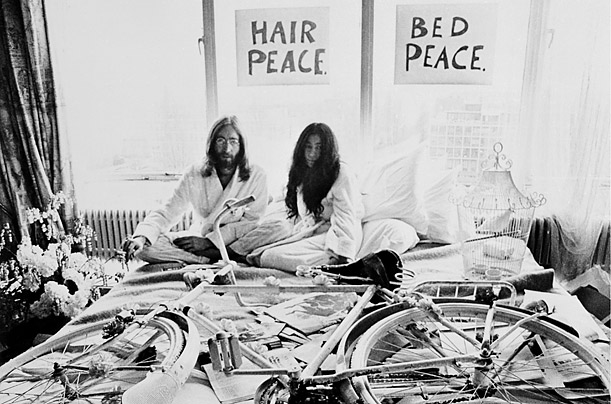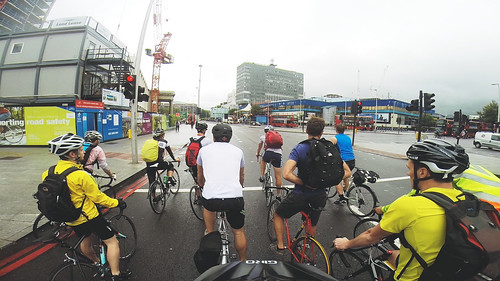As I've mentioned in other posts, I was a bicycle messenger in Manhattan for a year.
I was so, so young then. I can say that now: Many more years have passed since I made my last delivery than I had spent in this world before I made it. Sometimes I wonder, though, if I've really made any progress since then or whether I've simply found jobs and other situations in which my quirks and flaws work for me, or are simply overlooked.
Perhaps the real reason I can say now that I was so young when I did it is that, really, I couldn't do anything else at that time in my life. Rarely could I spend more than a couple of minutes with another person, or doing nearly anything else besides riding my bike without feeling anger or sadness or both. In the space of not much more than a year, two people who were very, very dear to me had died--one suddenly, the other mercifully--and another committed suicide. The only sort of job I could work was one in which I had only momentary interactions with people who could have told me that I was "wasting" my life by doing what I was doing or that, really, it was all I could do, all I could ever do. I could satisfy people only for moments, episodically, and I simply had to do a job in which I would be remunerated for doing so.
Those--even more than my physical changes--are reasons why I couldn't do that job today, although sometimes I wish I could. I understand now how it would be too easy for me to continue with a job in which I give and receive momentary satisfactions and rewards, not think about the future and not have to think about whether or not I was at my best because, really, there was no better or worst, only getting that next package, that next document, that next slice of pizza (Yes, I delivered a couple of those!) to the whoever needed it within the next fifteen minutes--and to never, ever think about it again, or at least until someone else--or even the same person--ordered such a delivery later in the day, the following day, the following week.
In short, there was no future. And there was no past because, really, no one else cared about anything else, as long as he (most of our customers were men) got a timely delivery. It didn't matter that I was a creative genius who had not been recognized or that I was stupid enough to believe I was one and angry enough to feel that others less deserving (which included just about everybody else) were being recognized and rewarded in ways I wasn't.
If I would have changed anything about my job, I would have wanted to work at night. There was something I liked about navigating the city's byways in the dark--or by streetlights, anyway, and the shadows they and the nightlights of small offices and furnished rooms cast. Of course, had I worked at night, I probably would have been making even more of those runs to then-seedy parts of the city (or to more gilded places with their own written codes of omerta) with envelopes and small packages, all the while pretending (or telling myself) I had no idea of what was in them.
There's nothing new about that aspect of being a bicycle messenger, a job that's been around for almost as long as the bicycle itself. Back in the days of the first Bike Boom in the US (roughly from the mid-1880s until the first years of the 20th Century), night messengers delivered telegrams for telegraph offices. They also, not surprisingly, ran side errands, such as fetching cigarettes and delivering "notes". I put quotation marks around that word because nightclubs, brothels and other establishments that operated after, say, 10pm sent and received them. So they were "notes" in the same sense as some of those envelopes I found myself delivering to the same addresses over and over again.
Those messengers were, as often as not, pre-teen boys. In those days, kids were put to work practically the day after they learned how to walk. But for jobs like those of night messenger and chimney-sweeper, the boys were often recruited out of orphanages or "reform" schools. In other words, they were the ones "nobody would miss".
Jacob Riis documented them, as well as other children, women and immigrants who worked in squalid and dangerous conditions, in How The Other Half Lives. His eloquent writing and starkly, beautifully poignant photographs helped people to learn about the conditions in which people like the messenger boys lived and worked. They also were instrumental in passing legislation such as the New York law--among the first of its kind--prohibiting people under the age of 21 from working as messengers after 10 pm.
A few times I made deliveries after that hour, or before the break of dawn. Somehow I don't imagine they were co-op sales agreements or copies of professionals' credentials. I know, though, that even though I was old enough to work those hours, I was still very, very young.
I was so, so young then. I can say that now: Many more years have passed since I made my last delivery than I had spent in this world before I made it. Sometimes I wonder, though, if I've really made any progress since then or whether I've simply found jobs and other situations in which my quirks and flaws work for me, or are simply overlooked.
Perhaps the real reason I can say now that I was so young when I did it is that, really, I couldn't do anything else at that time in my life. Rarely could I spend more than a couple of minutes with another person, or doing nearly anything else besides riding my bike without feeling anger or sadness or both. In the space of not much more than a year, two people who were very, very dear to me had died--one suddenly, the other mercifully--and another committed suicide. The only sort of job I could work was one in which I had only momentary interactions with people who could have told me that I was "wasting" my life by doing what I was doing or that, really, it was all I could do, all I could ever do. I could satisfy people only for moments, episodically, and I simply had to do a job in which I would be remunerated for doing so.
Those--even more than my physical changes--are reasons why I couldn't do that job today, although sometimes I wish I could. I understand now how it would be too easy for me to continue with a job in which I give and receive momentary satisfactions and rewards, not think about the future and not have to think about whether or not I was at my best because, really, there was no better or worst, only getting that next package, that next document, that next slice of pizza (Yes, I delivered a couple of those!) to the whoever needed it within the next fifteen minutes--and to never, ever think about it again, or at least until someone else--or even the same person--ordered such a delivery later in the day, the following day, the following week.
In short, there was no future. And there was no past because, really, no one else cared about anything else, as long as he (most of our customers were men) got a timely delivery. It didn't matter that I was a creative genius who had not been recognized or that I was stupid enough to believe I was one and angry enough to feel that others less deserving (which included just about everybody else) were being recognized and rewarded in ways I wasn't.
If I would have changed anything about my job, I would have wanted to work at night. There was something I liked about navigating the city's byways in the dark--or by streetlights, anyway, and the shadows they and the nightlights of small offices and furnished rooms cast. Of course, had I worked at night, I probably would have been making even more of those runs to then-seedy parts of the city (or to more gilded places with their own written codes of omerta) with envelopes and small packages, all the while pretending (or telling myself) I had no idea of what was in them.
There's nothing new about that aspect of being a bicycle messenger, a job that's been around for almost as long as the bicycle itself. Back in the days of the first Bike Boom in the US (roughly from the mid-1880s until the first years of the 20th Century), night messengers delivered telegrams for telegraph offices. They also, not surprisingly, ran side errands, such as fetching cigarettes and delivering "notes". I put quotation marks around that word because nightclubs, brothels and other establishments that operated after, say, 10pm sent and received them. So they were "notes" in the same sense as some of those envelopes I found myself delivering to the same addresses over and over again.
Those messengers were, as often as not, pre-teen boys. In those days, kids were put to work practically the day after they learned how to walk. But for jobs like those of night messenger and chimney-sweeper, the boys were often recruited out of orphanages or "reform" schools. In other words, they were the ones "nobody would miss".
Jacob Riis documented them, as well as other children, women and immigrants who worked in squalid and dangerous conditions, in How The Other Half Lives. His eloquent writing and starkly, beautifully poignant photographs helped people to learn about the conditions in which people like the messenger boys lived and worked. They also were instrumental in passing legislation such as the New York law--among the first of its kind--prohibiting people under the age of 21 from working as messengers after 10 pm.
A few times I made deliveries after that hour, or before the break of dawn. Somehow I don't imagine they were co-op sales agreements or copies of professionals' credentials. I know, though, that even though I was old enough to work those hours, I was still very, very young.






















